Heat oil in a saucepan over medium heat.
Add onions and cook until they turn a light golden brown.
Add garlic and ginger and cook until golden brown and fragrant.
Add chicken to the pan and fry until the chicken turns a light golden brown.
Season the chicken with fish sauce, black pepper powder, and salt, mixing well to coat.
Cover the pan and let the chicken cook for 5 minutes to absorb the seasonings.
After 5 minutes, add chicken stock to the pan, cover, and bring to a boil.
Add green papaya or chayote (sayote) to the soup, cover, and cook for another 5 minutes.
Finally, add moringa leaves or chilli leaves and long green chilies to the soup, and give one final mix.
Tinolang Manok is now ready to serve!
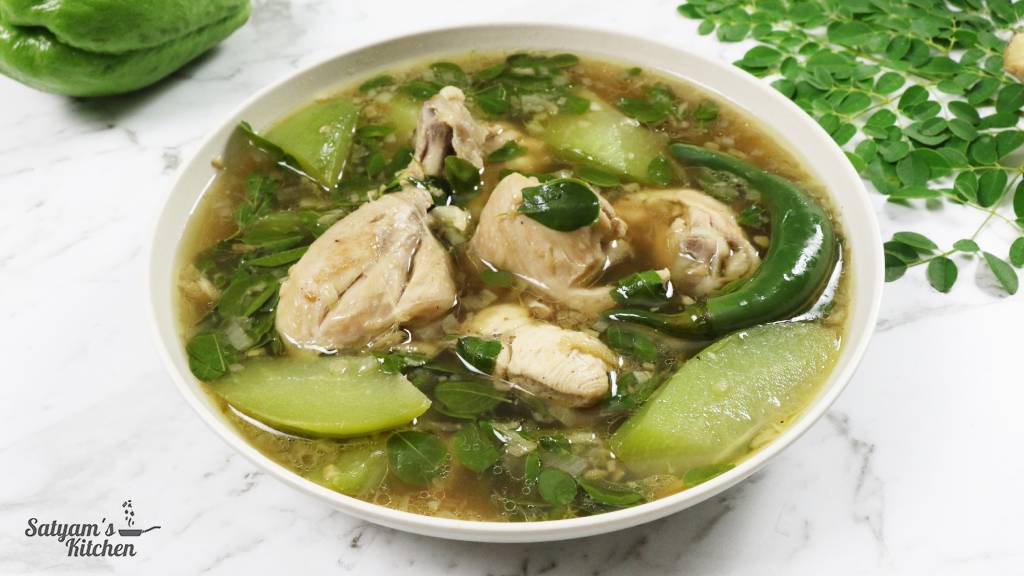
Ingredients
Directions
Heat oil in a saucepan over medium heat.
Add onions and cook until they turn a light golden brown.
Add garlic and ginger and cook until golden brown and fragrant.
Add chicken to the pan and fry until the chicken turns a light golden brown.
Season the chicken with fish sauce, black pepper powder, and salt, mixing well to coat.
Cover the pan and let the chicken cook for 5 minutes to absorb the seasonings.
After 5 minutes, add chicken stock to the pan, cover, and bring to a boil.
Add green papaya or chayote (sayote) to the soup, cover, and cook for another 5 minutes.
Finally, add moringa leaves or chilli leaves and long green chilies to the soup, and give one final mix.
Tinolang Manok is now ready to serve!
Notes
Main Ingredients for Tinolang Manok
- Chicken (Manok): The main protein source, typically cut into curry-sized pieces, providing heartiness and flavor to the soup.
- Ginger: Adds a spicy, aromatic flavor to the soup, enhancing its depth and warmth.
- Garlic: Provides a savory, aromatic base for the soup, adding depth of flavor.
- Onion: Adds sweetness and complexity to the soup, enhancing its overall flavor profile.
- Green Papaya: A firm, mildly flavored fruit used when unripe, adding a crunchy texture and subtle sweetness to the dish. Chayote (Sayote) can be used as a substitute for green papaya.
- Moringa Leaves (Malunggay): Nutritious leaves that contribute a vibrant green color and a subtle earthy flavor to the soup. Traditional Tinolang Manok typically uses chilli leaves (Dahon ng Sili). However, you can substitute or complement them with Malunggay for added nutrition and flavor.
- Long Green Chilies (Siling Pangsigang): Adds a mild spiciness to the soup, balancing out the other flavors.
- Fish Sauce (Patis): Provides umami depth and saltiness, enhancing the savory profile of the soup.
- Chicken Stock: Forms the flavorful base of the soup, infusing it with rich chicken essence and aroma.
- Oil: Used for sautéing the aromatics and chicken, adding richness and depth of flavor to the soup.
Tips for Tinolang Manok
- Choose Fresh Ingredients: Opt for fresh chicken, ginger, garlic, and vegetables to ensure the best flavor and texture in your soup.
- Prep Ingredients in Advance: Chop all your ingredients beforehand to streamline the cooking process. This includes slicing the ginger, mincing the garlic, dicing the onion, and cutting the chicken into curry-sized pieces.
- Sauté Aromatics Well: Take your time to sauté the ginger, garlic, and onion until they are fragrant and golden brown. This helps release their flavors and enhances the overall taste of the soup.
- Use Homemade Chicken Stock: If possible, make your own chicken stock for the soup. It will impart a richer flavor compared to store-bought versions. Simmering chicken bones, vegetables, and herbs in water for a few hours produces a flavorful stock.
- Adjust Seasoning Carefully: Taste the soup as it cooks and adjust the seasoning accordingly. You may need to add more fish sauce, salt, or black pepper to achieve the desired balance of flavors.
- Simmer Gently: Once you’ve added the chicken stock, allow the soup to simmer gently over low to medium heat. This allows the flavors to meld together and ensures the chicken and vegetables are cooked through.
- Add Vegetables Gradually: Add the vegetables to the soup in stages based on their cooking time. Start with firmer vegetables like chayote and add quicker-cooking greens like moringa leaves towards the end to prevent overcooking.
- Serve Hot: Tinolang Manok is best enjoyed piping hot. Serve it alongside steamed rice for a comforting and satisfying meal.
- Store and Reheat Properly: If you have leftovers, store them in an airtight container in the refrigerator. Reheat gently on the stovetop or in the microwave, adding a splash of water or chicken stock to maintain the soup’s consistency.
People Also Ask About Tinolang Manok
Q. Can I use other types of meat besides chicken?
A: While chicken is the traditional choice for Tinolang Manok, you can experiment with other meats such as pork or seafood. Adjust cooking times accordingly based on the protein you choose.
Q. Can I make Tinolang Manok without fish sauce?
A: Fish sauce adds a distinctive flavor to Tinolang Manok, but if you prefer not to use it, you can substitute with soy sauce or salt to taste. Keep in mind that the flavor profile may be slightly different.
Q. How do I make this dish more spicy?
A: To add more heat to your Tinolang Manok, you can increase the amount of long green chilies. You can also leave the seeds in the chilies for extra spiciness. If you prefer to avoid adding extra chili, simply increasing the black pepper powder should provide a spicier flavor profile.
Q. Can I use different vegetables in Tinolang Manok?
A: Yes, you can customize Tinolang Manok by adding other vegetables such as spinach, bok choy, or green papaya. Just be mindful of the cooking times and add them accordingly to ensure they are cooked to your desired level of tenderness.
Q. How do I store leftover Tinolang Manok?
A: Allow the soup to cool to room temperature before transferring it to an airtight container. Store it in the refrigerator for up to 3-4 days. Reheat it gently on the stovetop or in the microwave, adding a little water or chicken stock if needed to adjust the consistency.
Recipe Suggestions
Have you tried this recipe?
Mention us @satyamskitchen and tag #satyamskitchenrecipes
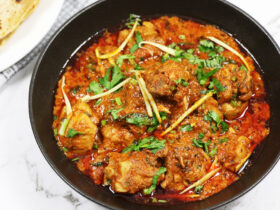
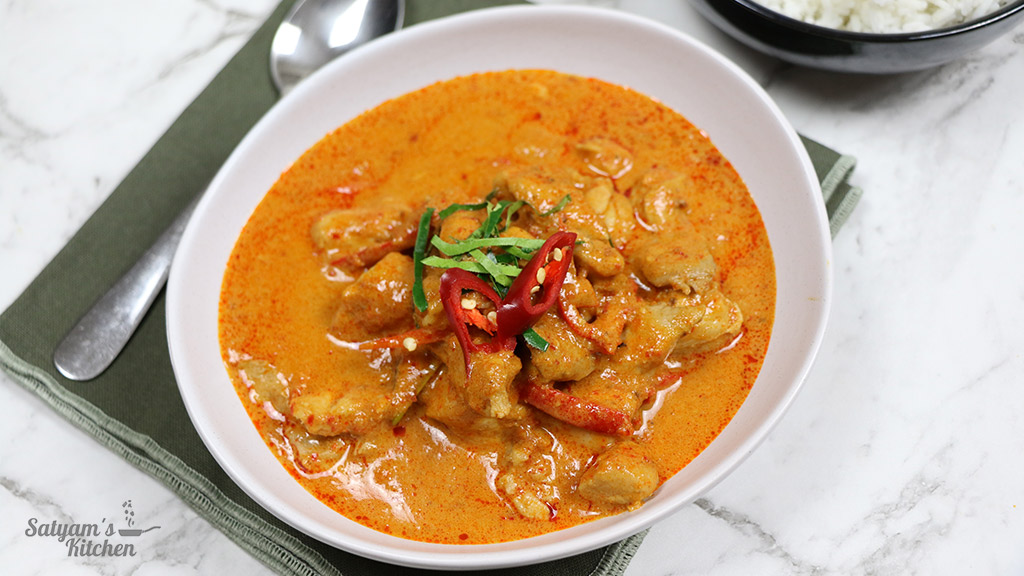
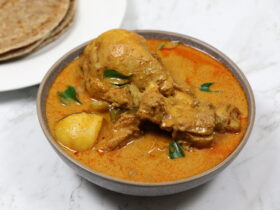




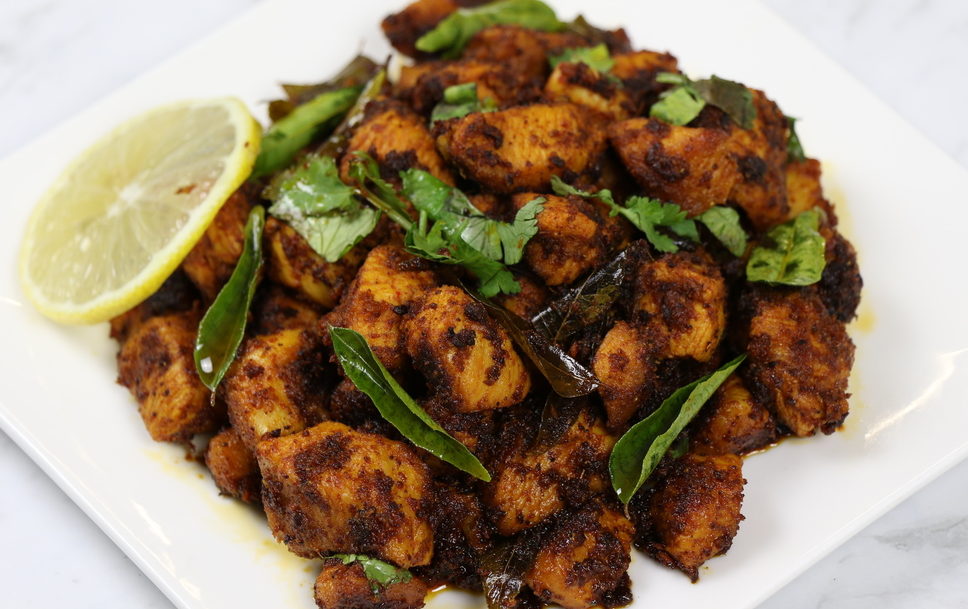


Leave a Review